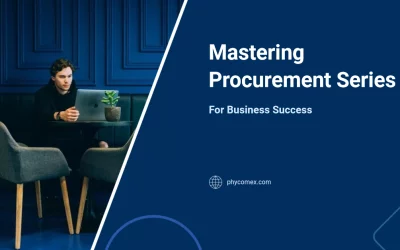Procurement is a critical process for businesses of all sizes, but it can often be difficult to get it right. This article will explore the five main pitfalls of procurement and the steps that organizations can take to ensure they are getting it right.
From quality and quantity, to time, place, and price, getting the procurement process right is essential for a business’s success. With the right practices in place, businesses can make sure their procurement processes are effective and efficient.
Quality: The Foundation of Procurement
Accurately specifying requirements and quality standards is critical to ensuring quality in procurement. Quality control is the cornerstone of the procurement process, ensuring that goods are of satisfactory quality and fit for their purpose.
Both buyers and suppliers must pay attention to the details of quality specifications, taking into consideration factors such as materials, processes, and resources. Supplier selection is also important, as selecting the right supplier is essential in meeting the desired quality levels.
Quality assurance checks must be conducted regularly to ensure that the delivered goods meet the agreed upon standards. Ultimately, quality management ensures that the goods delivered are as expected and free from defects.
Quantity: How Much Is Enough
Obtaining the right quantity of goods is essential in meeting demand and maintaining service levels; however, achieving this goal can be a challenge.
To ensure that sufficient stock is held, demand forecasting and inventory management are key. Estimating demand accurately is critical, as too much stock can tie up capital, while too little can lead to loss of sales.
An effective inventory strategy can help to balance these risks and ensure that the right quantity of goods is available when needed.
Accurate demand forecasting and inventory management are essential for optimizing stock levels and avoiding procurement pitfalls.
Place: Delivering Goods on Time and on Target
Having goods delivered to the appropriate delivery point is essential for avoiding procurement pitfalls. Delivery challenges can arise from inaccurate demand forecasting, inadequate transport planning, and lack of supplier management.
Supply chain optimization can help to ensure that goods arrive on time and in the right place. This involves accurately forecasting demand, utilizing efficient transport methods, and building strong relationships with suppliers. By doing this, it is possible to reduce costs and ensure that customer service levels are met.
Additionally, it can help to protect goods from damage, contamination, and theft while in transit. Achieving the right place and right time for delivery is key to successful procurement.
Time: Delivering Goods on Budget and on Schedule
Ensuring that goods are delivered on budget and on schedule is critical to avoiding procurement pitfalls. Delays in delivery can have an impact on production, service levels, and customer experience, while budget constraints can limit the quality and quantity of goods and materials purchased. It is important to predict and manage delivery times and costs to ensure the right product, with the right quality, in the right quantity, arrives at the right place, at the right time, and for the right price.
| Risk | Impact | Prevention |
|---|---|---|
| Delays | Production Bottlenecks | Demand Management |
| Budget Constraints | Low Quality/Quantity | Price Analysis |
| Wrong Place | Delay/Correction Costs | Distribution Planning |
| Early/Late | Inventory Costs | Supplier Management |
Price: Getting the Best Possible Value
Securing the best possible value for goods and materials is critical to avoiding procurement pitfalls. Negotiation tactics and supplier evaluation are key to getting the best possible value. This can be achieved by:
- Developing relationships with suppliers and engaging in continual dialogue
- Utilizing competitive bidding processes to acquire the best prices
- Assessing suppliers’ capabilities and performance
- Negotiating on terms and conditions such as payment terms, discounts, and delivery schedules
- Ensuring competitive pricing through market analysis and benchmarking
By using these tactics, buyers can ensure that they are obtaining the best value for their purchases.
Furthermore, suppliers can be held accountable and customers can be provided with high quality goods and services at a reasonable price.






0 Comments